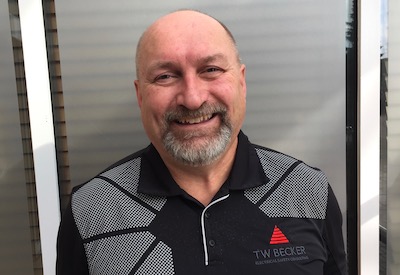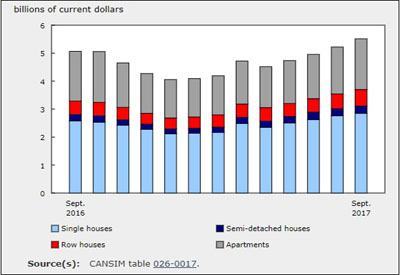Energized Electrical Work Permit YES or NO?

November 11, 2021
By Terry Becker, P.Eng., CESCP, IEEE Senior Member
All energized electrical work tasks performed require an Energized Electrical Work Permit (EEWP) to be issued, unless exempted as outlined in the CSA Z462 Workplace electrical safety Standard, Clause 4.3 Work Involving Electrical Hazards.
Ensuring your company’s Electrical Safety Program clearly documents the EEWP policy, process and exemptions will ensure clarity and value added in eliminating exposure to arc flash and shock hazards and doesn’t result in unnecessary bureaucracy.
The CSA Z462 Workplace electrical safety Standard has always required that an Energized Electrical Work Permit (EEWP) to be issued for all energized electrical work tasks unless exempted. The problem is miss interpretation in industry of this requirement related to the justification for energized electrical work if an Electrically Safe Work Condition cannot be established. This misunderstanding can also be linked to the CE Code Part I, Rule 2-304 Disconnection which in some Provinces has unfortunately been miscommunicated to industry and misunderstood that it is against the law to have a Qualified Person perform any energized electrical work tasks. This CE Code Part I rule does not prohibit energized electrical work, it in fact points to CSA Z462 in reference to the rule.
In CSA Z462 Clause 4.3.2 Energized Electrical Work Permit it states:
“When work is performed as permitted in accordance with Clause 4.1.6.2, an energized electrical work permit shall be required and documented under any of the following conditions:
- When work is performed within the restricted approach boundary; or
- When the worker interacts with the equipment when conductors or circuit parts are not exposed but an increased likelihood of injury from an exposure to an arc flash hazard exists.”
An example EEWP is illustrated in Figure 1 below, based on the recommendations of CSA Z462 Clause 4.3.2.2. If the EEWP process is understood correctly an EEWP would be required rarely and specific only to justified energized electrical equipment repair or alteration related work tasks (reference CSA Z462 Table 2, removal or installation of circuit breakers, insertion or removal individual starter buckets from MCC, insertion or removal of plug-in devices into or from busways).
Figure 1 – Example EEWP based on CSA Z462 Clause 4.3.2.3.2

Some of the incorrect interpretation and misinformation in industry is most likely based on information provided in generic CSA Z462 “arc flash awareness” or “arc flash training.” Ultimately employers need to review the CSA Z462 Workplace electrical safety Standard directly in developing and implementing a compliant Electrical Safety Program and ensuring they clearly understand what CSA Z462 is requiring as a mandatory practice or policy. Additional interpretation with respect to when an EEWP is actually required should be undertaken.
With respect Clause 4.1.6.2 Energized Work CSA Z462 outlines when energized electrical work can be performed if an “Electrically Safe Work Condition” cannot be established. Energized electrical work tasks can be performed when the employer can demonstrate that de-energizing:
- Introduces additional hazards or increased risk, or
- When the work task to be performed is infeasible in a de-energized state because of equipment design or operational limitations, or
- Electrical equipment operates at ≤30VAC or ≤60VDC.
When I review the requirements for an EEWP related to policy requirements in an employer’s Electrical Safety Program I ensure that a review of when the electrical equipment can be turned off and isolated is analyzed. Does the employer’s business allow for electrical equipment be turned off after 5PM where the business is not a continuous process? Is there an opportunity to schedule work where a short duration shutdown can be planned for not only electrical equipment maintenance but process/mechanical equipment maintenance? How urgent is it to add additional circuit breakers to panelboards? Ultimately our goal is to eliminate any energized repair or alteration related work tasks on electrical equipment.
Currently in CSA Z462 exemptions are listed when an EEWP is not required. Clause 4.3.2.3 Exemptions to Work Permit, identifies the following exemptions as long as the Qualified Person is provided with and uses appropriate safe work practices and PPE in accordance with CSA Z462 Clause 4 Work Involving Electrical Hazards:
- Testing, troubleshooting, or voltage measuring;
- Thermography, ultrasound, or visual inspections if the restricted approach boundary is not crossed;
- Access and egress to an area with energized electrical equipment if no electrical work is performed and the Restricted Approach Boundary is not crossed; and
- General housekeeping and miscellaneous non-electrical work tasks if the Restricted Approach Boundary is not crossed.
What I find in industry across Canada when I work with employers to develop an Electrical Safety Program is there is a belief that an EEWP is required for all energized electrical equipment work tasks related to operating, switching or maintenance. Even to enter a defined electrical room an EEWP would be required. This is not true. It is recommended that other specific work tasks should are reviewed by the employer and additional work task exemptions that would not require an EEWP to be issued are included in the employer’s Electrical Safety Program. This will add clarity with respect to operating energized electrical equipment, and to ensure the EEWP doesn’t become a bureaucratic process when it shouldn’t be.
By adding exemptions for additional work tasks related to operating, switching and maintenance work tasks that are justified it clarifies for Management, Supervision and Qualified Persons when they DO NOT require an EEWP. An employer could document additional exemptions based on infeasibility due to equipment design:
- Opening or closing a hinged door.
- Removing or installing a bolt on cover.
- Racking in or out power circuit breakers.
- Installing temporary protective grounds.
- Battery terminations.
As an example besides stating the exemptions a decision making flow chart as illustrated in Figure 2 below could be provided as a visual aid when communicating to staff and contractors when an EEWP would be required or not.
Figure 2 – EEWP Decision Making Flow Chart

It is important that as we continue in industry across Canada to ensure shock and arc flash hazards are identified, risk assessments completed, and additional protective measures implemented to reduce risk if we cannot eliminate exposure that we ensure we do not shutdown industry with misinterpretation or conservative application of CSA Z462’s requirements. CSA Z462 has made a significant positive impact on elimination and risk reduction when energized electrical work tasks are justified and completed, but needs to be specifically interpreted and applied through an employer’s Electrical Safety Program.





![Guide to the Canadian Electrical Code, Part 1 [i], 25th Edition– A Road Map: Tables Section](https://electricalindustry.ca/wp-content/uploads/2022/11/Guide-CE-Code-2-768x432.png)










